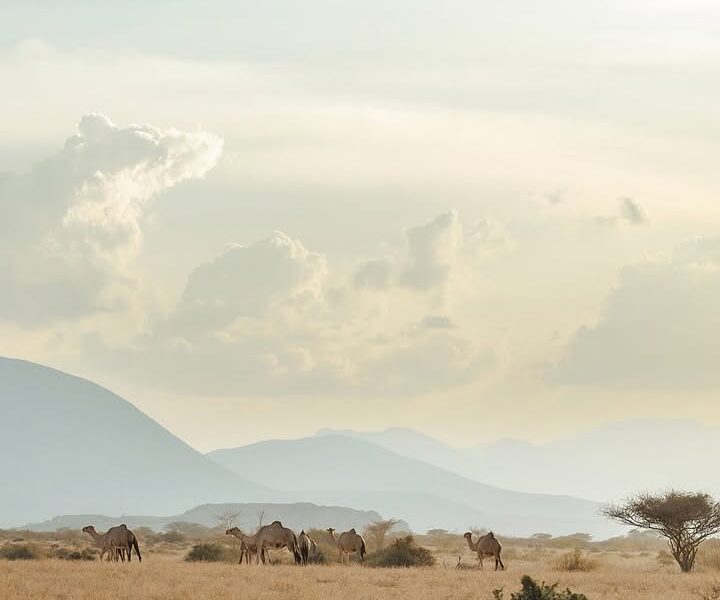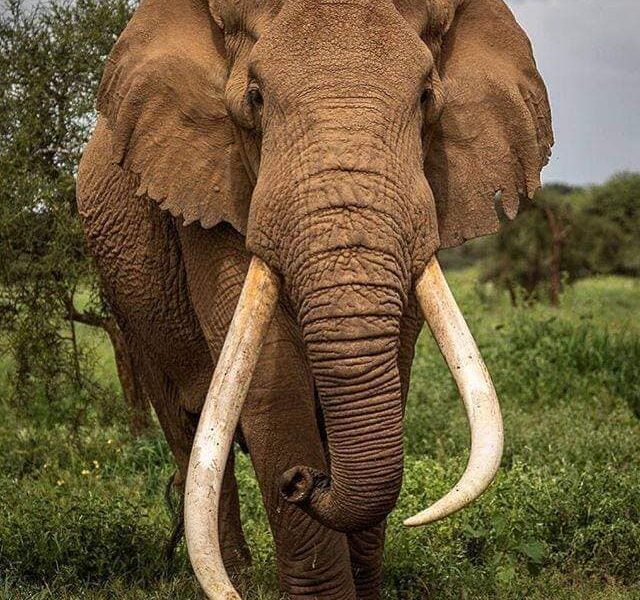Marsabit National Park, nestled within the lush, misty slopes of Mount Marsabit in northern Kenya’s Marsabit County, is a true hidden gem of the wild. Spanning approximately 1,554 square kilometers, this remote oasis rises like an island of green in the vast arid landscapes of the surrounding desert.
Ahmed: Marsabit’s famous tusker elephant

The park is steeped in natural beauty and rich history most famously as the home of Ahmed, Kenya’s legendary elephant. So revered was Ahmed for his massive tusks and noble presence that he was placed under 24-hour protection by presidential decree until his peaceful death at the age of 63.
Dense forests blanket much of the mountain, teeming with wildlife and echoing with the calls of rare bird species. Adding to its charm are three crater lakes, these lakes are not only a stunning sight but also a vital water source for elephants, buffaloes, leopards, monkeys, and a wide variety of birds and reptiles. Whether you’re a nature lover, birdwatcher, or history enthusiast, Marsabit National Park offers a serene yet wild escape unlike any other in Kenya’s northern frontier.
What’s the best time to visit Marsabit National Park?
The ideal time to visit Marsabit National Park is during the dry seasons, specifically from June to September and January to February. During these months, wildlife tends to congregate around the crater lakes in search of water, making animal sightings more frequent and rewarding for visitors.
Additionally, the dry conditions make travel within the park much easier and more reliable. Most of the roads leading to and within the park are unpaved, and during the rainy seasons, they can become muddy and difficult to navigate, especially for standard vehicles. Planning your visit during the dry months ensures a smoother and more enjoyable safari experience.
Why Visit Marsabit National Park?
Lake Paradise – The Heart of Marsabit National Park

Lake Paradise is the most famous of the three crater lakes within Marsabit National Park, located approximately 10 kilometers from Ahmed Gate. Nestled deep within the park’s dense forest, this stunning lake offers a scenic and serene view, often described as one of the most beautiful natural sights in northern Kenya.
Surrounded by lush vegetation and frequented by elephants, buffalos, monkeys, and a variety of bird species, Lake Paradise plays a crucial role in the park’s ecosystem, serving as a vital water source for wildlife, especially during the dry seasons.
Due to its breathtaking landscape and ecological importance, Lake Paradise has been featured in various literary works and nature documentaries, earning its reputation as the backbone of Marsabit National Park. It’s a must-visit spot for nature lovers, photographers, and anyone seeking tranquility in the wild.
The Singing Wells – A Unique Cultural Experience Near Marsabit

The Singing Wells are traditional water sources found near riverbeds, where the Samburu and Rendille communities dig deep pits during dry seasons to access water for their livestock. These wells are not located within Marsabit National Park, but in the surrounding areas, offering visitors a chance to explore local life beyond the park’s boundaries.
What makes these wells truly fascinating is the cultural ritual that accompanies their use. As the herders draw water by hand, they sing rhythmic chants, each unique to their family or clan. The songs are not only a way to coordinate the work but also a means of calling and calming their animals, creating a harmonious and unforgettable scene.
Visiting the Singing Wells provides an authentic cultural experience, offering insight into the deep connection between the local communities, their livestock, and the harsh environment they call home. It’s a powerful reminder of how tradition, resilience, and nature coexist in northern Kenya.
Hiking and Camel Rides in Marsabit’s Dense Forest

Nature walks through the dense forest of Marsabit National Park offer a peaceful yet adventurous way to explore the park’s rich biodiversity. Guided hikes take you under towering trees, through lush greenery, and along trails that reveal breathtaking views, exotic birdlife, and occasional sightings of wildlife like monkeys, antelopes, and forest elephants.
For a more unique experience, camel rides are available in certain areas around the park, allowing you to enjoy the scenic landscapes from a traditional and eco-friendly mode of transport. Moving quietly through the misty forest and open clearings, camel rides offer a relaxed way to connect with the natural beauty and serenity of the park. Whether on foot or on camelback, exploring Marsabit’s wild terrain is an unforgettable way to experience the park’s magical atmosphere and hidden wonders.
Marsabit offers a true adventure for those seeking a remote and rugged safari experience in Kenya, with untouched landscapes, rich wildlife, and deep cultural encounters.
Ready to explore Marsabit?
Let Bison Safaris handle the details – from custom itineraries to expert guides, we make your Marsabit adventure seamless. 👉 Contact Us Today.

